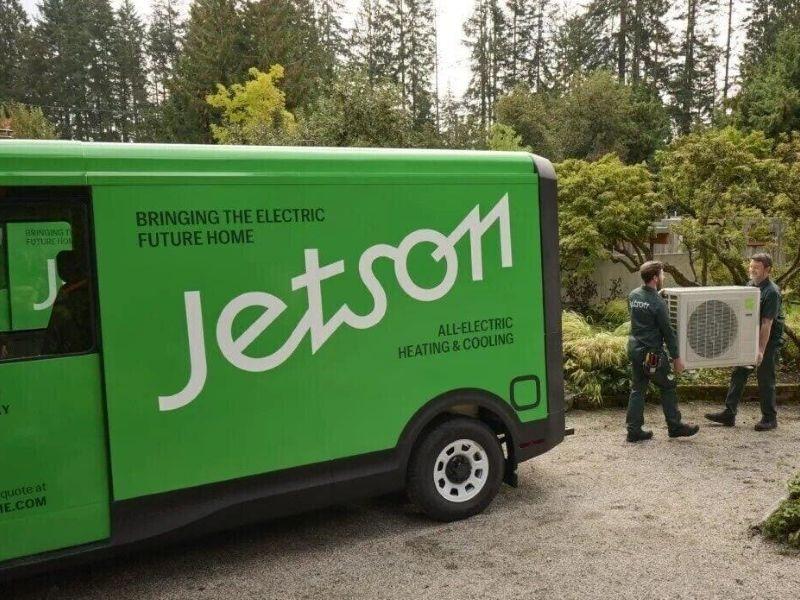
A US$40-million grant commitment from Bill Gates’ Breakthrough Energy Catalyst for Deep Sky’s carbon removal facility in Alberta caps off a year that saw the Montreal-based company make strides toward commercialization of its ambitious climate solution.
“This is incredible validation from one of the smartest investors on the planet on decarbonization,” for its unique business model, Damien Steel, CEO of Deep Sky, said in an interview with Sustainable Biz Canada.
The funds will be used for the construction and operations of Deep Sky Alpha, a facility in Innisfail, Alta. that will serve as a test site for direct air capture (DAC) technologies removing carbon dioxide (CO2) from the atmosphere. There, the intent is to scale-up the offering to a full business.
Founded by billionaire Bill Gates as a branch of the Breakthrough Energy Network, the Catalyst finances climate technologies that reduce greenhouse gases, prioritizing projects with aspirations for commercialization like Deep Sky. The Catalyst grant represents its first investment into a Canadian company and DAC project.
Deep Sky’s goal is to lower the cost of carbon removal, which Steel and co-founder Frederic Lalonde believe is critical to the viability of the nascent industry. The company is inching forward on plans for sites that can remove CO2 at an industrial scale.
A year to be proud of for Deep Sky
One of Deep Sky’s major developments in 2024 is the construction of Deep Sky Alpha. Work has gone ahead of schedule and on budget, Steel said, despite the scoffs he heard after announcing his intention to have it finished within one year.
Set to be operational in April 2025, Deep Sky Alpha will generate the company’s first carbon removal credits, with RBC and Microsoft among the earliest buyers. It will make Deep Sky one of the first firms in North America to deliver DAC credits on a registry.
At Deep Sky Alpha, the company will be using equipment from providers such as Airhive, Mission Zero, Skyrenu and Skytree for technology pilots and removing CO2 for its carbon removal credit buyers. Solar energy is to power the facility, and the CO2 is to be stored in an operational storage well.
Deep Sky’s mission at Alpha is to reduce the cost of DAC, currently pegged at US$600 to US$1,000 per ton of CO2 according to the World Economic Forum. The company can apply the efficiencies and creative solutions it used for the project on the larger, industrial-scale projects it intends to develop, Steel explained.
Having a quiver of multiple technologies to draw upon provides the diversity he hopes will put the company in a “privileged position to help the technologies we work with to design, build and operate DAC plants in a cheaper way.”
“The world will ultimately need many approaches to carbon removal at prices far lower than is achievable today, but Deep Sky’s platform will enable and accelerate the kind of real-world innovation that could make affordable DAC achievable,” Mario Fernandez, head of Breakthrough Energy Catalyst, said in a release.
Deep Sky has raised over $130 million since its founding, including its $75-million Series A, government funding and the Catalyst grant.
Deep Sky’s horizon for 2025
From smooth sailing on Deep Sky Alpha, its first sale of carbon removal credits, the partners it worked with, and the team it has assembled, Steel heard resounding approval from the company’s board for its progress in 2024.
“Series A companies are not supposed to attract the people we’ve been able to attract, and Series A companies are not supposed to be able achieve the things that we’ve been able to achieve,” Steel said he was told.
2025 will be another crucial year for Deep Sky: Steel hopes a final investment decision will be made on its first purely commercial facility before the end of the year.
Deep Sky aims to capture and store hundreds of thousands of tonnes of CO2 per year, using DAC technologies that can scale up quickly, at three planned Canadian facilities. Deep Sky Alpha can capture 3,000 tonnes per year by comparison.
Many more will be needed to make a dent in the 702 million tonnes of CO2 emitted in Canada in 2023.
Early steps such as community engagement, securing clean electricity from local utilities, conducting geological work, drilling its own carbon storage wells, and government collaborations are already happening for its first commercial sites, Steel said.
Steel said he is open to “creative funding structures”, and a funding round could happen as early as 2025.
Even as some political and economic winds tilt away from climate action, Steel said he is hearing a decidedly different tone from the Fortune 500 CEOs he talks to on a regular basis.
“Their ambitions and desires to decarbonize and attack the problem of climate change have not changed.” he said. “Political climate aside, if we’re able to produce effective carbon removal at a price point that scales and makes sense, the customers will be there.”










